Hidden Beaches in Kerala You Won’t Find in Guidebooks
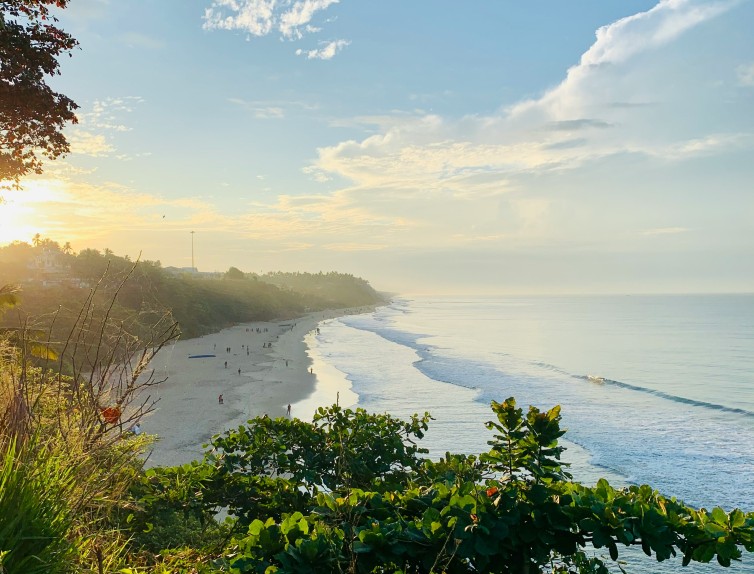
Sure, everyone talks about Kerala’s houseboats and those picture-perfect backwaters, but let’s be honest, sometimes you just want to breathe. No crowds, no noise, just you and the sound of waves. That’s the Kerala we’re diving into here. Tucked away from the touristy chaos are beaches so quiet, so untouched, it almost feels like they were waiting just for you. Whether you’re chasing a moment of peace, a little romance, or just some time to reset, these hidden beaches in Kerala might be exactly what your soul’s been craving. No filters, no hype, just real, raw beauty. 1. Pozhiyoor Beach – The Vibe Check You Didn’t Know You Needed Right where Kerala meets Tamil Nadu lies this underrated slice of peace: Pozhiyoor Beach. Think golden sands, quiet backwaters, and zero chaos. It’s where the Neyyar River casually flows into the Arabian Sea, and honestly? It’s giving main character energy. No vendors yelling, no selfie crowds—just you, the waves, and your thoughts (or your playlist). Pro Tip: Pull up on a weekday evening to have the whole place practically to yourself. Pack your own snacks and drinks, though there are no cafés, just pure unplugged vibes. 2. Kappil Beach – Varkala’s Chill Cousin That No One Talks About Okay, so you’ve done Varkala. But just 15 mins down the road is Kappil Beach, and trust us, it’s got that “where-has-this-been-all-my-life” vibe. Picture this: sea on one side, calm backwaters on the other, palm trees swaying like they’re in a slow-mo music video. It’s peaceful, raw, and totally off the radar. Perfect for quiet journaling moments, cinematic drone shots, or pretending you’re in a nature documentary. Pro Tip: Rent a scooter in Varkala and ride down for the day. Stop at the cliff viewpoints for some killer IG stories before you vibe out at Kappil. 3. Thaikadappuram Beach – Where Baby Turtles Steal the Show Okay, picture this: you’re chilling on a quiet beach in Kasaragod, and suddenly tiny baby turtles are making their way to the ocean. Yeah, it’s that kind of magical. Thaikadappuram Beach is totally off the tourist radar, but come turtle hatching season, it turns into a real-life nature doc minus the crowd. Pro Tip: Want to catch the turtle hatchlings? Plan your trip between September and November. It’s wholesome, it’s rare, and yes, it’ll totally melt your heart. Just don’t be that person; stay quiet, no flash photography, and let nature do its thing. 4. Marari Pozhi—The Chill Spot You Didn’t Know You Needed Sure, Marari Beach gets all the hype, but just sneak a little further and boom, you’re in Marari Pozhi, its quieter, introverted sibling. This part’s got zero crowd stress, soft sand that basically begs for a beach nap, and palms swaying like they’re on a lo-fi playlist. Pro Tip: Pack a mat, a good book, or that journal you’ve been ignoring. This is the place to zone out and vibe with yourself—no interruptions, no drama 5. Puthenpuram Beach – For That Raw, Real Kerala Energy Tucked near Cherai but totally off the beaten path, Puthenthope Beach is the kind of untouched beauty that makes you feel like you’ve stumbled into a postcard. You’ll see fishermen casting their nets and feel like you’re part of something real, not curated. Pro Tip: Wake up early (yes, we know it’s hard) and catch the locals at work. It’s pure, it’s peaceful, and the sunrise pics? Pure magic. 6. Kizhunna Ezhara Beach – Underrated Bliss You Didn’t Know You Needed Tucked near Kannur, Kizhunna and Ezhara are twin beaches that feel like a perfectly curated playlist—low-key, scenic, and effortlessly chill. Picture golden sands, swaying coconut trees, and sunsets that look like they’ve been filtered IRL. Pro Tip: Stay in a nearby homestay for that authentic Kerala vibe. You’ll get homemade meals and maybe even some insider tips on hidden sunrise spots that don’t make it to Instagram. 7. Valiathura Pier Beach—All About That Ocean Mood Close to Trivandrum but never overhyped, Valiathura Pier Beach is for people who just want to feel something (and not in a depressing way). The giant pier stretching into the sea gives major dramatic flair, and watching the waves slam during monsoon season? Totally therapeutic. Pro Tip: Visit during the rains if you want full-on ocean power vibes, but stay safe and don’t get too close to the edge. The goal is to heal, not fly. FAQs How do I add hidden beaches to my Kerala trip planner? Use your Kerala trip planner to slot beach days between popular stops like Alleppey, Varkala, and Kochi. These beaches are often short detours from well-known towns, so you won’t have to go out of your way. Is it safe to visit the hidden beaches in Kerala alone or as a couple? Totally! Most hidden beaches in Kerala are safe, peaceful, and less crowded, making them ideal for solo travelers and romantic getaways. Just follow general safety tips and go during daylight hours. Can I include these secret beaches in a 7-day Kerala itinerary? Yes! Whether you’re using a DIY Kerala travel planner or working with a travel agency, it’s easy to fit 2–3 of these beaches into a week-long Kerala itinerary. Kappil or Marari are great near Alleppey; Kuzhupilly works near Kochi. Are there budget stays near these offbeat beaches in Kerala? Absolutely. Your Kerala vacation guide isn’t complete without mentioning cozy homestays, beach huts, and backpacker hostels near beaches like Marari or Kizhunna. Perfect for that chill, no-frills vibe. What’s the best time to visit hidden beaches in Kerala? November to February is peak season for beach weather—sunny, breezy, and not too humid. Your Kerala trip planner should ideally avoid monsoon months (June–August) if beach time is a priority. Can a Kerala travel planner help me find hidden beaches no one talks about? Yes! The best Kerala travel planners or local guides know exactly where the secret gems are, often ones not listed on typical websites. A planner can also help with transport,
BALI’S TOP TRAVEL PICKS: ICONIC AND HIDDEN GEMS!!

Bali, the “Island of the Gods” is a tropical paradise offering stunning beach fronts and traditional culture with its beautiful settings. Bali offers tourists a perfect place to explore its diverse range of must visit travel destinations from iconic to hidden sites. This blog will take you through the best places in Bali, including secret beaches, stunning waterfalls, ancient temples, and adventure spots. Best Time to Visit Bali: April to October (Dry Season): Best for beach activities, trekking, and sightseeing. November to March (Rainy Season): Best time for those who love lush green landscapes and fewer crowds. Iconic Tourist Attractions in Bali: 1. Ubud: Ubud, known as the cultural heart of Bali, showcases well-known aesthetic features which include scenic rice terraces, traditional architecture and historical temples. Bali is the ultimate haven for art lovers, yoga enthusiasts, and those seeking a spiritual retreat. This is a must visit destination to experience serene landscapes and a vibrant arts scene. Nearby Attractions & Activities: Goa Gajah (Elephant Cave) – A historical place with amazing rock carvings. Tegalalang Rice Terraces – Stunning terraced rice fields. Campuhan Ridge Walk – A scenic trekking path with serene views. 2. Gili Islands: The Gili Islands (Gili Trawangan, Gili Air, and Gili Meno) offer pristine white sandy beaches, crystal-clear waters, and incredible snorkeling spots. Gili Islands is the perfect spot to experience tropical beauty as there are no vehicles and offer both vibrant evenings and quiet tranquility. Nearby Attractions & Activities: Scuba Diving – Explore underwater coral gardens and shipwrecks. Bike Tours – Cycle around the islands. Snorkeling with sea turtles –The experience stands as an absolute must. 3. Canggu: Canggu is a lively coastal town that offers surf-friendly beaches, hip cafes, and energetic nightlife. This should be a must visit place for beach enthusiasts and nature lovers as it provides both relaxation and adventurous experiences. Nearby Attractions & Activities: Pererenan Beach – A peaceful beach with scenic landscapes. Tanah Lot Temple – A stunning seaside temple famous for sunset views. Horseback Riding – Ride through the black sand coast for an unforgettable journey. 4. Kuta: Kuta is one of Bali’s most famous destinations, known for its golden beaches, bustling nightlife, and surf-friendly waves.This place offers tourists an exciting scene with many amusement choices. Nearby Attractions & Activities: Waterbom Bali – One of the best water parks for thrill lovers. Legian Beach – A great spot for a more relaxed beach vibe. Beachwalk Shopping Center –Shopping mall with global brands and dining. 5. Nusa Lembongan: Nusa Lembongan is a peaceful island escape just off the coast of Bali, featuring dramatic cliffs, vibrant marine life, and crystal-clear waters. It offers an ideal setting for relaxation and is the perfect destination to experience Bali’s natural wonders away from crowds. Nearby Attractions & Activities: Nusa Penida – Kelingking Beach and Broken Beach. Nusa Ceningan – A beautiful island with stunning views. Mangrove Forest Tour – A peaceful kayaking experience through lush mangroves. Hidden Gems in Bali: For those who love to explore offbeat locations, here are some of Bali’s best-kept secrets: 1. Sidemen Valley: A peaceful alternative to Ubud, Sidemen Valley features lush rice fields, traditional villages, and scenic mountains. It’s perfect to escape the crowds and enjoy an authentic Balinese experience. Tourists can explore Balinese terrain while biking through rice paddies and stopping at traditional weaving studios and hiking to concealed waterfalls. 2. Banyu Wana Amertha Waterfall: Banyu Wana Amertha Waterfall is an underrated natural wonder featuring multiple waterfalls surrounded by lush jungle. People seeking a peaceful nature getaway will find Banyu Wana Amertha Waterfall as one of Bali’s most scenic hidden waterfalls. There are several other spots including Gitgit Waterfall and Ulun Danu Beratan Temple for travellers. 3. Tukad Cepung Waterfall: One of Bali’s most magical waterfalls, Tukad Cepung is a hidden gem located inside a cave, where sunlight creates a mesmerizing effect on the water. The trek to the waterfall is short but adventurous, passing through jungle pathways and rocky terrain. Nearby, you can also visit Tibumana Waterfall and Goa Rang Reng Waterfall for more nature adventures. Frequently Asked Questions (FAQs): Q1. What is the best time to visit Bali? The best time to visit Bali is from April to October for ideal beach weather, sightseeing, and outdoor activities. However, the rainy season from November to March offers less crowds and lush green landscapes. Q2. What are the must-visit temples in Bali? Must Visit temples include Besakih Temple, Tanah Lot, Tirta Empul, Goa Gajah and Uluwatu Temple for a glimpse into Bali’s rich cultural and spiritual heritage. Q3. What are the best islands near Bali to visit? The Gili Islands, Nusa Penida, Nusa Lembongan, and Nusa Ceningan offer stunning beaches, snorkeling spots, and adventure activities. Q4. How do I get around Bali? Travel around Bali using taxis, private drivers, scooter rentals or local shuttle services. Renting a scooter is a budget-friendly and flexible option, but ensure you have an international driving license. Q5. How much does a trip to Bali cost? Bali is a budget friendly option with tourists spending around $30–50 per day, while luxury travelers can expect to spend $150+ per day on accommodations, dining, and activities. Conclusion: Bali offers a perfect mix of adventure, culture, and relaxation. From iconic landmarks like Tanah Lot and Uluwatu Temple to hidden gems like Sidemen Valley and Tukad Cepung Waterfall.. Bali provides visitors with every experience they could want ranging from photogenic sites to adventure and tranquil hideaways. So pack your bags, plan your perfect Bali adventure, and get ready to explore the best places in Bali! Planning a trip? You are just one click away! Click here and let The Tarzan Way’s AI planner do the hassle for you. Let’s plan the best trip ever!
Gateway of India to Marine Drive: Mumbai’s Electric Symphony of Lights and Life
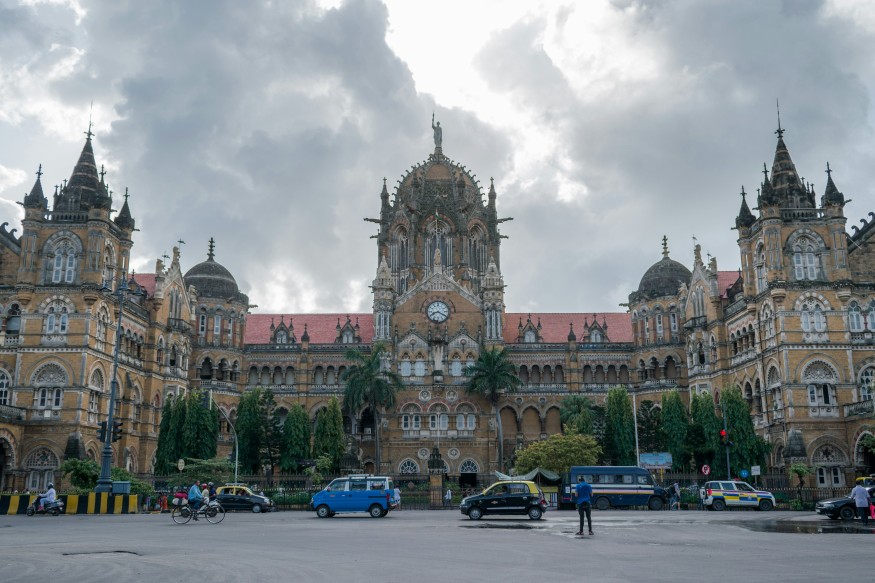
Mumbai is a city that never slows down—it’s a mix of chaos and charm, where history and modern life collide, and at the heart of it all are two of its most iconic landmarks: the Gateway of India and Marine Drive. These locations serve as both popular tourist destinations and embodiments of the history of Mumbai and its enduring spirit and delightful atmosphere. This breathtaking journey connects the Gateway of India with Marine Drive no matter if you visit Mumbai for the first time or if you have lived there for years. This enchanting stretch features colonial architecture, while the Arabian Sea waves create a perfect symphony with history and cultural attractions and mesmerizing seaside vistas. Gateway of India: The Grand Welcome to Mumbai A Monument of History and Majesty The Gateway of India received its completion in 1924 to mark the royal visit of King George V and Queen Mary to India. This large basalt gateway fills the waterfront in Colaba, where visitors encounter architectural influences from both Indo-Saracenic and Islamic traditions. Through time it evolved into Mumbai’s most distinguished attraction that showcases both the history of British colonial rule and Indian independence. Pro Tip: Coming early in the morning before 8 AM allows visitors to experience the site without crowds and capture fantastic photographs under soft morning illumination. What Makes the Gateway of India Special? ● Historical Significance: The British troops used this location as their departure point from India to mark its independence in 1948. ● Stunning Architecture: A mix of Hindu, Muslim, and European styles. ● Ferry Rides: From this location guests can obtain ferry rides that lead to the UNESCO World Heritage Site of Elephanta Caves. ● Vibrant Atmosphere: The location offers a bustling, energetic environment because of its numerous performers along with photographers and busy cafes lining the streets. ● Nearby Attractions: Walk to Taj Mahal Palace Hotel, an architectural masterpiece and one of Mumbai’s most luxurious hotels. Pro Tip: Don’t miss sunset time at Gateway because the setting sun casts golden light over the arch, which makes it perfect for photographers. The Journey: Gateway of India to Marine Drive The distance between the Gateway of India and Marine Drive is about 3 km. You can explore this stretch in multiple ways: By Taxi (10-15 min): The most convenient option. On Foot (30-40 min): A scenic foot trek exploring Colaba Causeway will take 30 to 40 minutes while you see attractions such as the Taj Mahal Palace Hotel and Regal Cinema. By Bus (20 min): You can reach Marine Drive in 20 minutes by riding a local bus from Colaba to Churchgate Station followed by a brief walking distance. Cycling (25 min): Experience Mumbai differently by spending 25 minutes on a rental bike. Pro Tip: If you decide to walk through Mumbai, take a detour to Colaba Causeway because it hosts an iconic street market selling jewelry and bags together with antique items. But if Mumbai’s bustling streets aren’t enough to satisfy your explorer’s spirit, the wilderness beyond the city awaits—discover the best adventure getaways near Mumbai. Marine Drive: Mumbai’s Queen’s Necklace A Coastal Marvel That Shines at Night A step toward Marine Drive transports you from the bustling urban traffic into the peaceful seaside landscapes. The 3.6-kilometer boulevard follows the coastline while maintaining its exclusive views of the Arabian Sea. The streetlights create a sparkling line stretching across the landscape that draws comparisons to a necklace, thus earning its title “Queen’s Necklace.” People from all walks of life in the city visit this stretch because it serves as their top destination for relaxation. Why is Marine Drive famous? ● Sunset Views: The city’s most desirable location for Arabian Sea sunset viewing exists at this site. ● Peaceful Ambience: This area provides a peaceful atmosphere suitable both for joggers during mornings and walkers during evenings and for relaxation along the promenade. ● Breathtaking Nightscape: The Mumbai skyline creates a mesmerizing display as night falls on the city. ● Bollywood’s Favorite: Marine Drive has been featured in countless Bollywood movies, adding to its legendary status. ● Romantic Spot: The romantic atmosphere of this location attracts many couples who want to admire its breathtaking beauty, making it rank among Mumbai’s most romantic sites. But if you’re looking to make the day truly unforgettable, these Valentine’s Day plans in Mumbai might just set the perfect mood. Pro Tip: The best time to see the Queen’s Necklace emerge is between 5:30 PM and 7:00 PM, when the light turns golden before the evening transforms into total darkness. Things to Do Around Marine Drive 1. Indulge in Street Food at Girgaum Chowpatty Girgaum Chowpatty stands at the north end of Marine Drive as a destination perfect for street food enthusiasts. People can find authentic Mumbai flavors at this place through dishes like pani puri along with pav bhaji and the popular kulfi, and for those who believe the best experiences don’t have to come with a hefty price tag, Mumbai has plenty to offer on a student budget. 2. Experience Luxury Dining Marine Drive has excellent fine dining restaurants, which you can discover through these recommendations: Pizza By The Bay: Famous for delicious pizzas with ocean views. The Bayview at Hotel Marine Plaza: Rooftop dining with a panoramic city skyline. Bachelor’s: A legendary spot for juices, shakes, and ice creams. Dome at InterContinental: One of Mumbai’s best rooftop bars. 3. Explore Nariman Point: The Business Hub Marine Drive’s southern endpoint shifts into the business district known as Nariman Point, which dominates Mumbai’s business landscape. The district holds the city’s tallest buildings and luxury hotels, which create an amazing vision between financial centers and calm oceanfront space. Pro Tip: Walk to NCPA (National Centre for Performing Arts) to catch a live play or a music concert. Frequently Asked Questions: Can I Visit Marine Drive at Night? Yes! Marine Drive remains accessible for visitors throughout the day and night because it is fully secure during every hour. Marine Drive appears most enchanting during the dark hours of the
Best Hidden Beaches in Goa for Peaceful Escape!!
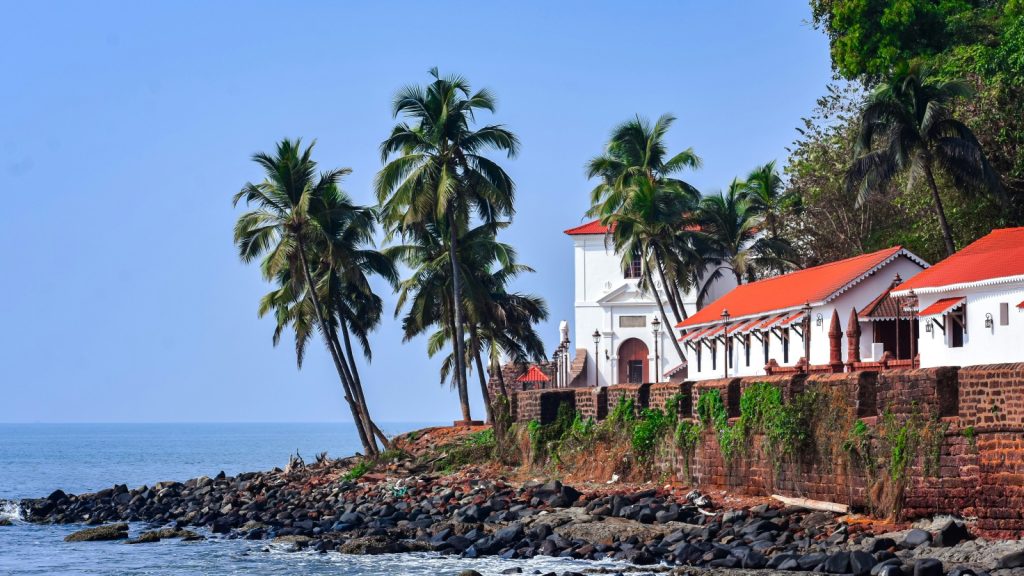
Goa, the state with vibrant nightlife, stunning coastline, and bustling beaches, also hides some of the most peaceful and secluded beaches. The popular beaches like Baga, Calangute, and Anjuna attract large crowds. There are also multiple offbeat and lesser-known beaches of Goa that provide a peaceful environment that lets you escape the tourist rush. The crystal-clear waters of Vainguinim Beach and Cola Beach’s stunning beauty surrounded by coconut trees are perfect hideaways. The most peaceful beach experiences are from March to April or from November to December. Whether you’re looking for quiet beaches in North Goa or majestic beaches in South Goa, this guide will take you through the best hidden beaches in Goa. Serene view of a beach in Goa featuring greenery and crystal-clear water. 1. BUTTERFLY BEACH: Butterfly Beach is one of the most beautiful beaches, known for its peaceful environment and serene views. The most eye-catching feature of this beach is that you can witness many butterflies flying over the hilltop. This beach is situated on the northern end of Palolem Beach and is accessible by boat or trek. Butterfly Beach is a must-visit for people who love nature and calm environments. Butterfly Beach with golden sand and warm blue water surrounded by lush green forest. 2. KAKOLEM BEACH: Kakolem Beach is one of the best hidden beaches with breathtaking views. It is surrounded by cliffs and greenery away from the hustle and bustle. This beach offers a unique experience with the best sunset views and a peaceful environment. It is the perfect spot for a relaxing trip along with the beauty of nature. Kakolem Beach is a must-visit for nature lovers and photographers. A hidden paradise—Kakolem Beach featuring serene views surrounded by lush green hills. 3. GALGIBAGA BEACH: Galgibaga Beach is one of the cleanest and most peaceful beaches that remains untouched, surrounded by golden sand and crystal-clear waters. This beach is surrounded by palm trees, making it perfect for a relaxing stroll and offering a serene atmosphere. Galgibaga Beach remains refreshingly undeveloped, with minimal commercial activity, providing people the opportunity to enjoy the raw beauty of nature. It is a must-visit for those who want to experience untouched natural beauty. Scenic views of Galgibaga Beach framed by lush greenery and golden sands meeting crystal water. 4. COLA BEACH: Cola Beach is one of Goa’s most secluded and untouched beaches, a perfect escape for nature lovers. It lies hidden behind thick vegetation and palm trees. Cola Beach features a stunning blue lagoon where a small river meets the Arabian Sea. This beach is a great place to disconnect from city life and relax. It is a must-visit for people who want to enjoy raw, untouched beauty with a magical lagoon. The best time to visit Cola Beach is November to May, as the place remains closed during monsoons. Cola Beach with its stunning views featuring the majestic blue lagoon. 5. HOLLANT BEACH: Hollant Beach is a peaceful, quiet, and lesser-known beach. It is one of the rare beaches to watch a stunning sunrise over the sea. Unlike many other Goa beaches, this beach is safe for swimming because of its slow and gentle waves. Hollant Beach is perfect for people who want to relax in a calm environment. It is a must-visit for photographers and nature lovers. Hollant Beach, surrounded by palm trees and crystal-clear water, offering a peaceful ambiance. 5. SINQUERIM BEACH: Sinquerim Beach is one of the least crowded beaches in North Goa. It is a good spot for a peaceful retreat. Sinquerim Beach offers serene views with mesmerizing sunsets over the crystal-clear water. It is perfect for those looking for peaceful beaches in North Goa. This beach is a must-visit for nature lovers and photographers. Sinquerim Beach, featuring scenic views with crystal-clear water. 6. AGONDA BEACH: Agonda Beach is one of the most peaceful beaches of South Goa. It is surrounded by palm trees and gentle waves. This beach offers a serene environment where one can relax and soak in the natural beauty. Agonda Beach is perfect for long walks, swimming, and relaxing. Agonda Beach is the perfect place for people who love exploring hidden gems. It is a must-visit if you want to experience a peaceful setting surrounded by nature. Scenic view of Agonda Beach with palm trees and clear blue sky, offering a serene coastal getaway. 7. BETALBATIM BEACH: Betalbatim Beach is one of the most serene and peaceful beaches away from large crowds. This beach is famous for its sunset, where one can see the most enchanting sunset. Betalbatim Beach is a heaven for people who love clean and peaceful environments with scenic views. It is also known for its dolphin spotting opportunities. This is the perfect spot for nature lovers and solitude seekers. Night view of Betalbatim Beach showcasing scenic coastal landscape and peaceful setting. 8. VAINGUINIM BEACH: Vainguinim Beach is a hidden gem in Goa known for its silver sand seashore and peaceful atmosphere. This place offers serene views with greenish-blue water and lush greenery. It is ideal for sunbathing, swimming, and long walks. Vainguinim Beach is a great spot and a must-visit for birdwatchers, families, and nature lovers. Serene views of Vainguinim beach featuring golden sand, lush greenery, and crystal water Best Times to Visit Hidden Beaches: The charm of Goa’s hidden beaches is best enjoyed when you plan your trip during the ideal months. Off-Season Experience: November to December and March to April have perfect weather, and there are fewer tourists at secret beaches. These months offer peaceful moments away from the usual tourist buzz. These hidden beaches become peaceful during the off-season. This would be the perfect time to experience the beauty of these beaches without distractions. Monsoon Beauty at these hidden gems: The monsoon months from June to September reveal a different side of Goa’s hidden beaches. Rivers swell to their banks, and the landscape turns lush green during this time. The monsoon adds a beauty that shows up only in these months.
South Goa Unplugged: Exploring the Quieter Side
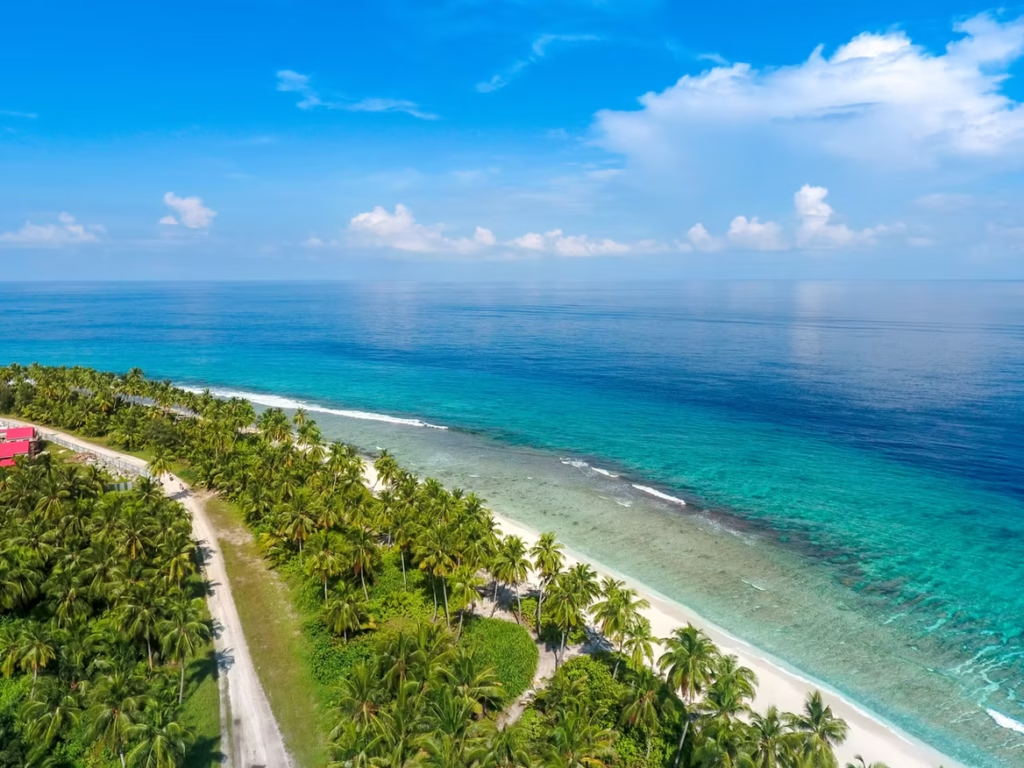
Are you tired of the crowded beaches and bustling streets of Goa? Do you crave a more peaceful and serene experience? Then it’s time to explore the quieter side of Goa, where the true essence of this vibrant state resides. Join us on an unforgettable journey as we discover secluded beaches, quaint villages, and hidden gems in South Goa that will leave you refreshed and rejuvenated. Are you tired of the crowded beaches and bustling streets of Goa? Do you crave a more peaceful and serene experience? Then it’s time to explore the quieter side of Goa, where the true essence of this vibrant state resides. Let’s embark on an unforgettable journey as we discover secluded beaches, quaint villages, and hidden gems in South Goa that will leave you refreshed and rejuvenated. Palolem & Colva: Secluded Beach Escapes Palolem and Colva stand out as epitomes of tranquility in South Goa. Unlike their bustling northern counterparts, these beaches offer a more relaxed and laid-back atmosphere. Palolem, nestled in Canacona, mesmerizes with its crescent-shaped shoreline embraced by swaying palms. The calm waters invite leisurely swims or tranquil moments by the shore, perfect for introspection or simply soaking in the natural beauty. Colva, with its 2.4-kilometer stretch of soft sands, beckons visitors to unwind amidst scenic surroundings. Water sports enthusiasts can indulge in activities like parasailing, adding a dash of adventure to their serene getaway. Both Palolem and Colva boast charming beach shacks and eateries, serving up delectable Goan cuisine that tantalizes the taste buds while offering uninterrupted views of the azure sea. Tranquil Escapes: Agonda, Cola, and Butterfly Beach Venturing further into the tranquil realm of South Goa, Agonda, Cola, and Butterfly Beach emerge as hidden paradises awaiting discovery. Agonda’s laid-back vibe and picturesque setting make it a haven for those seeking solitude amid nature’s splendor. The beach’s souvenir market and local eateries provide glimpses into Goan culture and culinary delights. Cola Beach, although slightly off the beaten path, rewards intrepid travelers with its untouched beauty. Accessible via a scenic boat ride, Cola’s pristine sands and crystalline waters create an idyllic setting for blissful relaxation or romantic moments against a backdrop of panoramic coastal views. Butterfly Beach, shrouded in a veil of secrecy, captivates with its secluded charm. Accessible only by boat from Palolem, this hidden gem offers a sense of exclusivity and tranquility. Sunset vistas from Butterfly Beach paint the sky in hues of gold and crimson, casting a magical spell over visitors fortunate enough to witness nature’s nightly spectacle. Vasco De Gama: A Journey Through Time Venture inland to Vasco De Gama, where history and heritage await. This historic city is a testament to Goa’s rich past, with ancient churches and museums offering glimpses into bygone eras. Explore the old-world charm of St. Andrews Church and delve into the maritime history at the Naval-Aviation Museum, discovering the layers of Goa beyond its beaches. Immersing in Local Life Beyond the tourist hotspots, South Goa reveals its authentic charm through its quaint villages and vibrant culture. Take a leisurely stroll through the narrow lanes, interact with friendly locals, and savor traditional delicacies that reflect the region’s culinary heritage. It’s a chance to experience Goa not just as a tourist destination but as a living, breathing tapestry of traditions and stories. Culinary Delights and Cultural Immersion No exploration of Goa is complete without savoring its culinary delights and immersing oneself in its rich culture. South Goa’s eateries serve up a delectable array of seafood delicacies, infused with traditional spices and flavors that epitomize Goan cuisine’s essence. From fresh catch of the day at beachside shacks to fine dining experiences showcasing Goa’s culinary heritage, every meal becomes a gastronomic journey. Cultural immersion opportunities abound in South Goa, where traditional festivals, arts, and crafts offer glimpses into Goa’s vibrant heritage. From lively music and dance performances to artisanal markets brimming with handmade treasures, every moment unveils a facet of Goa’s multifaceted identity. Final Thoughts South Goa is more than just a destination—it’s a feeling. A place where time slows down, where waves whisper instead of roar, and where every moment invites you to unwind, reflect, and reconnect with yourself. Whether you’re craving solitude, culture, or coastal charm, South Goa delivers it all—without the crowds. Ready to escape the noise and experience the real Goa?Let The Tarzan Way craft a personalized South Goa itinerary for you—filled with hidden beaches, authentic experiences, and peaceful stays designed around your pace. Because your journey into tranquility deserves to be as unique as you are.
Andaman and Nicobar Islands: Tropical Paradise Reimagined.

Dream vacation with pristine beaches and lush greenery? Look no further! Discover the untouched beauty of Andaman and Nicobar Islands in this travel guide that will take you on a journey through its tropical paradise reimagined. Nestled in the azure waters of the Bay of Bengal The Andaman and Nicobar Islands are a captivating destination that promises a tropical paradise like no other. With their pristine beaches, crystal-clear waters, and lush greenery, these islands offer a serene escape from the hustle and bustle of everyday life. Credits: Unspalsh Immerse yourself in the natural beauty of the islands by taking a leisurely stroll along the shores, or embark on a thrilling scuba diving or snorkeling adventure to discover the vibrant marine life that thrives beneath the surface. With its diverse range of flora and fauna, the Andaman and Nicobar Islands are a nature lover’s paradise. Scubadiving, Credits: Unsplash Whether you’re seeking relaxation, adventure, or a glimpse into the local culture, the Andaman and Nicobar Islands offer a truly enchanting experience that will leave you with memories to last a lifetime. Top Attractions to Explore When visiting the Andaman and Nicobar Islands, there are several must-visit attractions that should be on your itinerary. Beaches to relax and unwid: Radhanagar Beach on Havelock Island is a must-see. With its pristine white sand and turquoise waters, it has been consistently ranked as one of the best beaches in Asia. Elephant Beach, known for its vibrant coral reefs and colorful marine life, is another popular spot for snorkeling and diving. Radhanagar Beach, Credits: Unspalsh For History Buffs and Architecture Lovers: One of the most popular destinations is the Cellular Jail in Port Blair, which serves as a reminder of the islands’ colonial past and the struggle for independence. The light and sound show held at the jail is a moving experience that takes you back in time. Cellular Jail, Credit: unsplash A visit to Ross Island is highly recommended. Once the administrative headquarters of the British during their rule, the island now stands as a fascinating ruin, with remnants of colonial buildings and a serene atmosphere. For nature enthusiasts, a trip to the Mahatma Gandhi Marine National Park is a must. Spanning several islands, the park is home to a diverse range of marine life, including coral reefs, turtles, and tropical fish. Take a glass-bottom boat ride to explore the underwater world without getting wet. These are just a few of the many attractions that the Andaman and Nicobar Islands have to offer. Each destination has its own unique charm and beauty, waiting to be discovered. Unique Experiences to Indulge In While exploring the Andaman and Nicobar Islands, there are several unique experiences that you can indulge in to make your trip truly unforgettable. 1.) One of the highlights of visiting these islands is the opportunity to witness the mesmerizing bioluminescence phenomenon. Take a night-time swim or simply stroll along the shoreline to witness this magical spectacle. Credit: Unsplash 2) Visit the limestone caves take a boat ride through the dense mangrove forests to reach the caves and marvel at their stunning beauty. These natural formations are home to thousands of swiftlets, and the sound of their chirping echoes throughout the caves. Bartanga Island, Credit: Pintrest 3) For adventure seekers, a trek to the top of Mount Harriet is a must. As the highest peak in the Andaman and Nicobar Islands, it offers breathtaking panoramic views of the surrounding islands and the vast expanse of the Bay of Bengal. From exploring hidden beaches to encountering exotic wildlife, there is always something new and exciting to discover. Local Cuisine and Culture The local cuisine is a fusion of Indian, Southeast Asian, and tribal flavors, seafood is a staple in the islands, with fresh catches of fish, crabs, prawns, and lobsters available in abundance. Andaman fish curry, a spicy and tangy delicacy that is sure to tantalize your taste buds. Andaman cusinie spread In addition to seafood, the islands are known for their tropical fruits, such as mangoes, bananas, and coconuts. Indulge in refreshing fruit juices and smoothies made from these locally sourced ingredients. Tips for Planning Your Trip To make the most of your trip to the Andaman and Nicobar Islands, here are some tips to keep in mind: – Plan your trip in advance to ensure availability of flights and accommodations, especially during peak tourist seasons. – Pack light and comfortable clothing, as the islands have a tropical climate throughout the year. – Don’t forget to carry sunscreen, insect repellent, and a hat to protect yourself from the sun. – Stay hydrated and drink plenty of water, especially if you’re engaging in outdoor activities. – Take the time to interact with the local communities and learn about their way of life. By following these tips, you’ll be well-prepared for an amazing journey through the tropical paradise of the Andaman and Nicobar Islands.
Goa’s Nightlife: A Guide to the Lit Night life
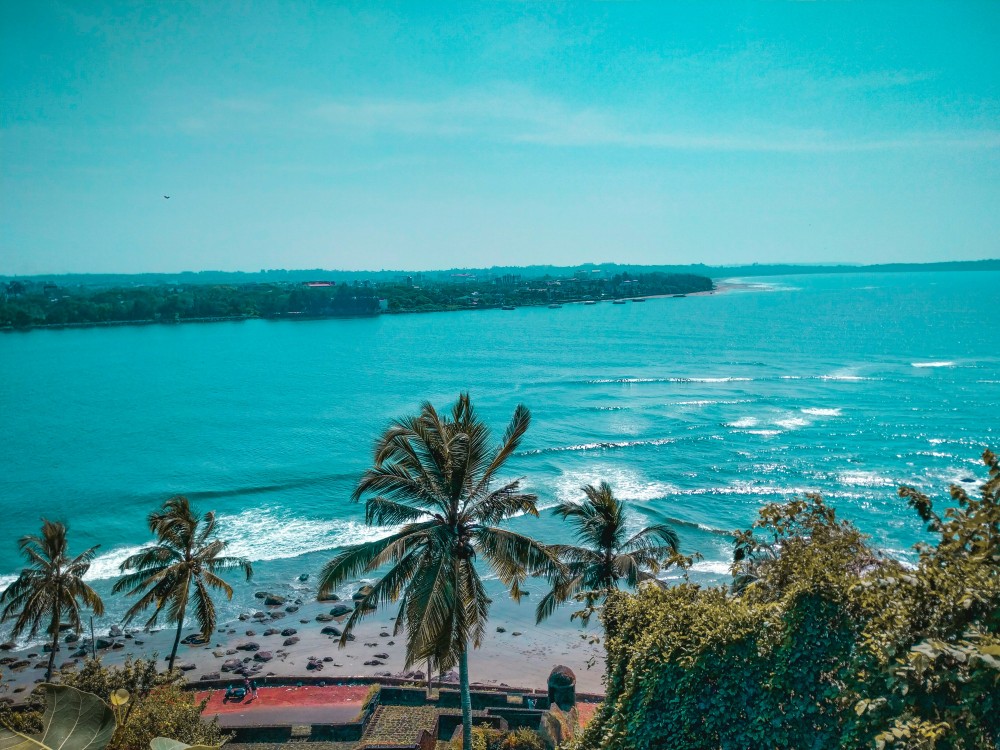
From Legendary Beach Ragers to Hidden Kickbacks, Goa’s Nightlife is Lit When that bright Indian sun finally sets over Goa’s gorgeous beaches, this laid-back tropical haven transforms into a non-stop party animal. The former Portuguese colony on India’s western coast comes alive at night with a legendary nightlife scene that attracts folks from all over the globe. Whether you’re looking to go wild at the epic beach parties or discover some quirky underground spots, Goa’s got all kinds of wicked nightlife experiences waiting for you. This guide will take you to the hottest hotspots and hidden gems where you can let loose and party until dawn. Beachside Bashes That Go All Night Long You can’t do Goa nightlife without hitting up the wildly famous beach parties. These massive open-air ragers on the sand are where the real party magic happens, with world-class DJs, fire dancers, and crowds of revelers from across the world cutting loose together. Anjuna Beach The Trance Party Capital, Anjuna Beach, is the trance party capital of not just Goa, but maybe the whole world. Every Wednesday, this picturesque beach transforms into an all-night rager, with booming beats, mind-blowing light shows, and nonstop dancing that doesn’t stop until sunrise. The legendary Shiva Valley, smack in the middle of Anjuna’s dune,s is the place to be for these wildly popular trance fests. Named after the Hindu god of partying (kind of), this huge open-air dance floor hosts the biggest trance DJs and some of the craziest psytrance parties you’ll ever witness. Just imagine moving and grooving barefoot in the sand as mesmerizing visuals are projected onto the nearby cliffs. Vagator Beach Sunset Chasers’ Bootylicious Spot As that bright orange sun starts dipping into the Arabian Sea, the scene at Vagator Beach starts heating up. This rustic beach strip comes to life at sundown with a whole bunch of funky little beach shacks and pop-up parties lining the sandy shores. It’s the ultimate spot for those looking to chase that epic Goa sunset with a cold drink in hand while grooving to live musicians and DJs throwing down an eclectic mix of grooves and beats. Goa’s Hidden Underground: From Salsa Clubs to Bohemian Bars While the beach bashes are Goa’s most famous after-hours affairs, the party momentum continues at the area’s awesome range of underground clubs and bars. From swanky Latin-inspired hotspots to bohemian artist hangouts, Goa’s nightlife gems offer up all kinds of unique vibes. Club Cubana Havana Meets Goa Step through the doors of Club Cubana, and you’ll feel like you’ve teleported straight to the streets of Old Havana. This massive two-floor Arpora club is decked out with vintage 1950s Cuban decor—think colorful hand-painted tiles, old-school cars, and a lush outdoor courtyard that’ll make you feel like you’re in the heart of the Caribbean. The DJ keeps the Cuban-inspired Latin jams and infectious salsa rhythms pumping all night while skilled bartenders shake up premium rum cocktails behind the bar. The real draw is the regular live salsa and Cuban dance shows that take over the dance dancefloor. Tito’s Lane Trippy Artists’ Hangout For a totally different kind of nightlife experience, head to Tito’s Lane in the heart of Baga. This winding bohemian alleyway is packed with quirky hole-in-the-wall bars, funky cafes, and live music joints that ooze a super chill, artsy feel. It’s the perfect escape from the glitzy club scene. As you weave through the lively, winding lanes, you’ll uncover hidden gems bursting with character. Step into Café Mambo, where fresh local talent and touring reggae artists light up the stage every night, turning the space into a rhythm-filled escape. Slip into the playful world of Cocktails & Dreams, sip on a craft drink, and catch quirky open mic performances that keep the energy buzzing. And then there’s Tito’s, a place that thrives on being delightfully offbeat, where the mix of people, music, and vibe feels like pure magic. Joseph Bar Goa’s Quintessential Watering Hole. For a true taste of old-school Goan nightlife, there’s no better spot than Joseph Bar in Vagator. This classic beach shack-style bar has been a fixture on the scene for decades, attracting a fun mix of grizzled expats, salty backpackers, and Goa party vets. The atmosphere is super laid-back and quintessentially Goan, with a barefoot crowd sipping on dangerously strong cocktails and beers until the early AM. Take On Goa’s Nonstop Nightly Action From thumping beach parties under the moonlight to salsa beats in Havana-style clubs and secret boho hideouts where music never stops, Goa is pure nightlife magic. It’s the place where every night turns into a story worth telling. Grab your gang, let loose, and dive into India’s wildest after-dark adventure because when the sun sets in Goa, the real party begins. Contact the Tarzan Way today to start planning your unforgettable Goa’s Nightlife experience, and let us create a night to remember, tailored just for you!
Goa Bliss: AI-Guided Wellness Retreats

Rejuvenate Your Mind and Body in the Wellness Havens of Goa. India’s tropical paradise of Goa is renowned for its sun-kissed beaches, pulsating nightlife, and laid-back coastal charm. However, beyond the revelry lies a serene realm dedicated to holistic wellness, where ancient healing traditions seamlessly blend with modern practices. Embark on a transformative journey with our AI-powered guide, unveiling the best yoga retreats, soothing spas, and nourishing experiences that will leave you feeling rejuvenated from the inside out. Yoga by the Beach: Embracing Mindfulness in Nature’s Embrace Goa’s idyllic beachfronts provide the perfect setting for yoga enthusiasts seeking to deepen their practice amidst the soothing sounds of lapping waves and gentle sea breezes. Discover tranquil seaside retreats that offer a sanctuary for reconnecting with your mind, body, and spirit. Bamboo Yoga Retreat, Ashvem Beach Nestled along the pristine shores of Ashvem Beach, the Bamboo Yoga Retreat welcomes you to a serene oasis crafted from sustainable bamboo. Immerse yourself in daily yoga sessions, guided by experienced instructors, as you practice amidst swaying palm trees and the calming rhythm of the ocean. Complementary wellness offerings, such as meditation classes and Ayurvedic consultations, further enhance your journey toward inner balance. Purple Valley Yoga Retreat, Mandrem Beach Tucked away in the picturesque village of Mandrem, the Purple Valley Yoga Retreat offers a transformative experience that combines the ancient wisdom of yoga with modern amenities. Participate in a diverse range of yoga styles, including Hatha, Vinyasa, and Ashtanga, led by renowned teachers from around the world. After your practice, indulge in delectable vegetarian cuisine and explore the retreat’s lush gardens, creating a harmonious connection with nature. Ayurvedic Spas in North Goa: Revitalizing Ancient Healing Traditions Goa’s rich heritage in Ayurvedic medicine has given rise to luxurious spas that harness the power of ancient healing practices to promote overall well-being. Surrender to the skilled hands of Ayurvedic therapists and experience a profound sense of rejuvenation. Soulfit Ayurvedic Spa, Nerul Step into the tranquil oasis of Soulfit Ayurvedic Spa, where traditional Ayurvedic therapies are combined with modern wellness techniques. Embark on a personalized journey tailored to your unique constitution (dosha), with treatments ranging from revitalizing massages to detoxifying therapies. The spa’s serene ambiance, complemented by the expertise of skilled practitioners, creates an environment conducive to deep relaxation and healing. Kadamb Ayurveda & Yoga Village, Pilgao Immerse yourself in the authenticity of Ayurvedic living at the Kadamb Ayurveda & Yoga Village. This serene retreat nestled in the quaint village of Pilgao offers a holistic approach to wellness, blending traditional Ayurvedic treatments with yoga, meditation, and nutritious Ayurvedic cuisine. Experience the transformative power of panchakarma therapies, designed to detoxify and restore balance, while enjoying the tranquility of the surrounding lush gardens. Holistic Well-Being Experiences in Goa Beyond yoga and Ayurveda, Goa offers a tapestry of holistic experiences that cater to various aspects of wellness, allowing you to curate a truly personalized journey of self-discovery and renewal. Mindfulness Retreats at Sarmavi Embark on a profound journey of mindfulness and self-exploration at Sarmavi, a tranquil retreat centered around the principles of Vipassana meditation. Guided by experienced teachers, you’ll delve into the art of mindful living, cultivating present-moment awareness and learning techniques to navigate life’s challenges with greater clarity and equanimity. The peaceful surroundings, complemented by nourishing vegetarian cuisine, provide an ideal environment for introspection and personal growth. Unleash your inner bliss in the wellness havens of Goa, where ancient healing traditions intertwine with modern practices to create a harmonious pathway to rejuvenation. Whether you seek to deepen your yoga practice, restore balance through Ayurvedic therapies, or embark on a transformative journey of self-discovery, our AI-guided wellness guide will lead you to the most authentic and revitalizing experiences in this tropical paradise. Let The Tarzan Way curate your perfect wellness escape in Goa—powered by AI, personalized just for you. From yoga on quiet beaches to spa retreats hidden in the palms, your rejuvenation journey starts here. Book your AI-guided wellness retreat to Goa now with The Tarzan Way—because bliss shouldn’t be one-size-fits-all.
Lakshadweep Mystique: Stargazing and Celestial Delights

Why Lakshadweep? The Lakshadweep Islands, an enthralling tropical paradise inside the Arabian Sea, offer more than simply sun, sand, and surf. These pristine islands are a haven for stargazing fanatics, imparting some of the clearest nighttime skies you may ever witness. In this blog, we will take you on a celestial journey through the islands, from the ethereal landscapes of Lakshadweep stargazing to the wonders of the night sky in Kadmat and celestial delights in Agatti. The Perfect Stargazing Destination Star-studded sky in Lakshadweep The Lakshadweep Islands, a collection of 36 coral atolls, lagoons, and islands, are far removed from the hustle and bustle of metropolis lighting fixtures and pollutants. This isolation makes the islands an ideal vacation spot for looking at the nighttime sky in all its glory. Whether you are an amateur astronomer or truly want to be surprised by the stars, Lakshadweep gives an exceptional experience. The Wonders of Lakshadweep Stargazing 1. Crystal Clear Skies One of the largest blessings of stargazing in Lakshadweep is the crystal-clean skies. The absence of light pollutants allows you to look at the celebrities as they had been meant to be seen: shiny, beautiful, and unobstructed. Milky way band throughout the sky of Lakshadweep The Milky Way turns into a stunning band throughout the sky, imparting a surreal experience for everybody who looks up. 2. Agatti: A Celestial Hotspot Agatti Island is one of the most famous vacationer locations in Lakshadweep and additionally a haven for stargazers. Its pristine beaches and secluded spots provide the best places for a night of celestial observation. Agatti Island at nighttime The island’s crystal-clear waters mirror the nighttime sky, creating a mesmerizing mirror effect that amplifies the beauty of the celebrities. Agatti is also a hotspot for adventure seekers; the calmness at night might turn into an adrenaline rush in the morning with the water sports in Agatti. TTW Tip: When stargazing in Agatti, keep an eye out for the that is seen in the iciest months. You may additionally catch a glimpse of the Southern Cross, a well-known constellation visible within the Southern Hemisphere. 3. Kadmat: A Starry Paradise Kadmat Island, with its long stretches of sandy seashores and serene ecosystem, is every other stargazing paradise. The island’s far-flung place and restrained populace make it a really perfect spot for observing the night sky in Kadmat. Kadmat beach The tranquility of the surroundings complements the experience, permitting you to lose yourself inside the celestial wonders above. The Tarzan Tip: Kadmat is a fantastic vicinity for viewing meteor showers, especially during peak months. Keep an eye out for the Perseids in August and the Geminids in December for an astounding show. Tips for Stargazing in Lakshadweep Plan Your Visit: The high-quality time for stargazing in Lakshadweep is at some point of the dry season (October to April) when the skies are clearest. Find a Secluded Spot: Look for quiet beaches away from artificial lights for the first-rate viewing revel in. Bring Binoculars or a Telescope: Enhance your stargazing enjoyment by bringing along binoculars or a telescope to get a better view of celestial gadgets. Check Moon Phases: A new moon offers the darkest skies and top-quality stargazing conditions, so plan your experience around it if viable. Local Stargazing Tours: Consider becoming a member of a neighborhood stargazing excursion to research more approximately the constellations and celestial items visible inside the location. Conclusion Lakshadweep offers a unique opportunity to immerse yourself in the splendor of the night sky while enjoying the tranquil environment of the islands. Whether you’re watching the stars from the seashores of Agatti or catching a meteor bath in Kadmat, the celestial delights of Lakshadweep will leave you in awe. So, pack your telescope and binoculars, and get ready to enjoy the magic of Lakshadweep stargazing. This journey of celestial wonders is guaranteed to be a journey you may cherish for an entire life. Thanks for tuning in, and remember, the pleasant adventures take place off the overwhelmed route! Let The Tarzan Way help you plan your trip!
Lakshadweep Serenity: AI-Enhanced Beach Escapes

If you’re dreaming of a peaceful beach vacation, where soft sands meet calm waters and time feels slower, Lakshadweep might just be your answer. These islands, scattered across the Arabian Sea, remain one of India’s quietest and most untouched getaways. And now, thanks to a few smart tech tools, discovering this hidden paradise has never been easier—or more personal. The Calm of Lakshadweep’s Shores There’s something about Lakshadweep that feels different. Maybe it’s the silence, or how the sky blends into the sea with no skyscrapers in sight. Unlike the usual tourist-packed coastlines, this group of islands gives you space—space to breathe, relax, and just be. Each beach here has its own personality. Some are wide and welcoming, great for long walks or lazy afternoons. Others are tucked away, perfect for travelers who’d rather go off the map than follow a crowd. Planning your first trip? Take a look at Lakshadweep Revealed: An Essential Guide for First-Time Visitors — it’ll help you navigate entry permits, island hopping, and local customs without overwhelm. Beaches That Speak for Themselves A few of the best-known spots include: Agatti Beach – calm waters, white sands, and no noise except the wind. Ideal for swimming or just watching the sunset. Kavaratti Beach – livelier, but still peaceful. Water sports are popular here, so if you’re in the mood for kayaking or snorkeling, this is your place. Bangaram Island – uninhabited and untouched. You won’t find shops or cafes here—just sand, sea, and silence. For those planning a couple’s retreat, Romantic Escapes in Lakshadweep: Honeymoon Packages and Experiences in Lakshadweep covers candlelit dinners, private villas, and everything you need to turn your getaway into something unforgettable. What Lies Beneath: Coral Reefs & Atolls Above water, Lakshadweep is beautiful. Underwater? It’s something else. Minicoy Atoll offers calm, clear lagoons where schools of fish swim past like living art. Kadmat Atoll is a hit with divers—its coral reefs are bright, colorful, and full of life. Kiltan Atoll is more quiet and local, but the coral gardens here are just as magical. The best part? AI tools can now help you explore the sea more safely and smartly. Apps can point out coral species as you snorkel or alert you to eco-sensitive zones. They don’t replace a guide—but they make you feel more connected to the environment you’re in. We explored this tech-meets-nature magic in Lakshadweep: A Tropical Haven Mapped by AI, where the islands are navigated not just by maps, but intelligent planning. Let AI Help You Travel Smarter No, robots aren’t booking your hotel. But AI tools can make your Lakshadweep trip smoother. Want a day-by-day plan? You can use apps that build itineraries based on your travel dates, interests, and budget. Not sure what to pack? Tools that track weather and activities can help prep your bag with more than just flip-flops. Curious about what to expect? Virtual previews of resorts, dive sites, and beaches let you decide where to go before you even get there. If you’re someone who likes to keep things organized and stress-free, having a little tech on your side can make all the difference. More Than Just Beaches Lakshadweep isn’t only about white sand and blue water. There’s culture here too—quiet, simple, and deeply rooted in tradition. The Kavaratti Aquarium is a small but fascinating stop where you can see some of the sea creatures that live just offshore. Kalpeni Island offers more than beautiful views. If you’re lucky, you might catch a local dance or festival—small, welcoming, and full of heart. And when night falls? The skies here are unreal. With little light pollution, you can actually see the stars. Grab a mat, lie on the beach, and just look up. For night-sky lovers, Lakshadweep Mystique: Stargazing and Celestial Delights dives into all the best places and times to catch shooting stars and constellations. Great for Families Too People often think of Lakshadweep as a couple’s spot. And while it’s definitely romantic, it’s also a great place for families. Shallow waters make it safe for kids to swim. Many resorts have easy walking trails, and some offer educational nature walks and boat rides. If you’re traveling with parents or children, Lakshadweep Island – An All-Age Vacation Guide for Families breaks down how to make it fun for everyone—from toddlers to grandparents. In Closing: Peace Meets Personalization It’s hard to find places like this anymore. Lakshadweep doesn’t throw itself at you. It doesn’t rush. It lets you settle in—slowly. And with the help of a few smart travel tools, you can make the most of your time here without overplanning or missing what matters. If you’re ready to explore somewhere quiet, meaningful, and naturally stunning—without giving up the perks of smart planning—then Lakshadweep is waiting. Let The Tarzan Way help you plan the ultimate peaceful island escape—from curated itineraries to authentic stays, we’ve got your back.



